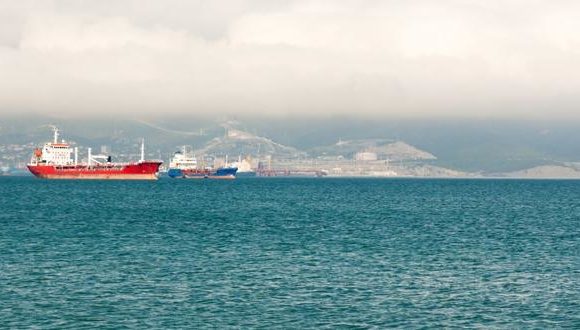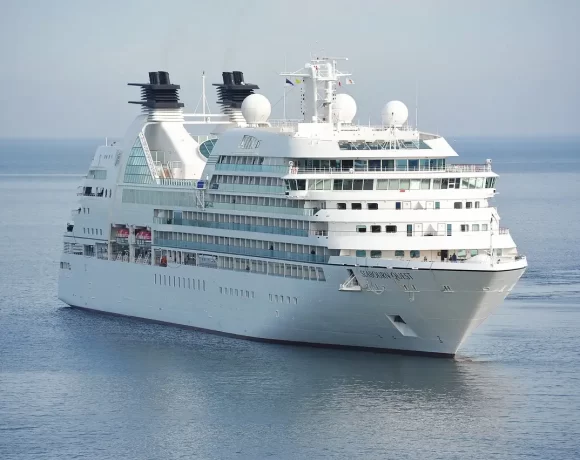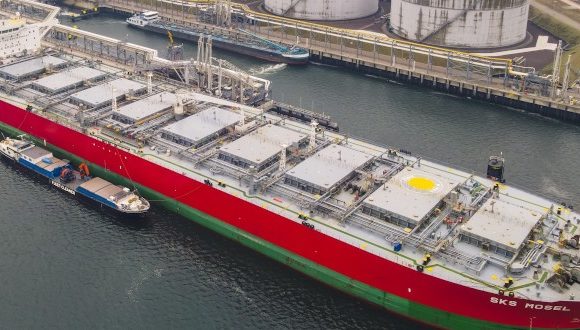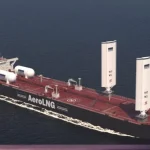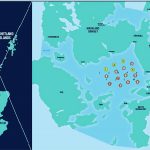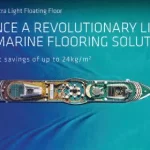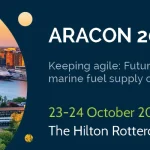Ocean Data Revolution: How Big Data is Powering Marine Conservation
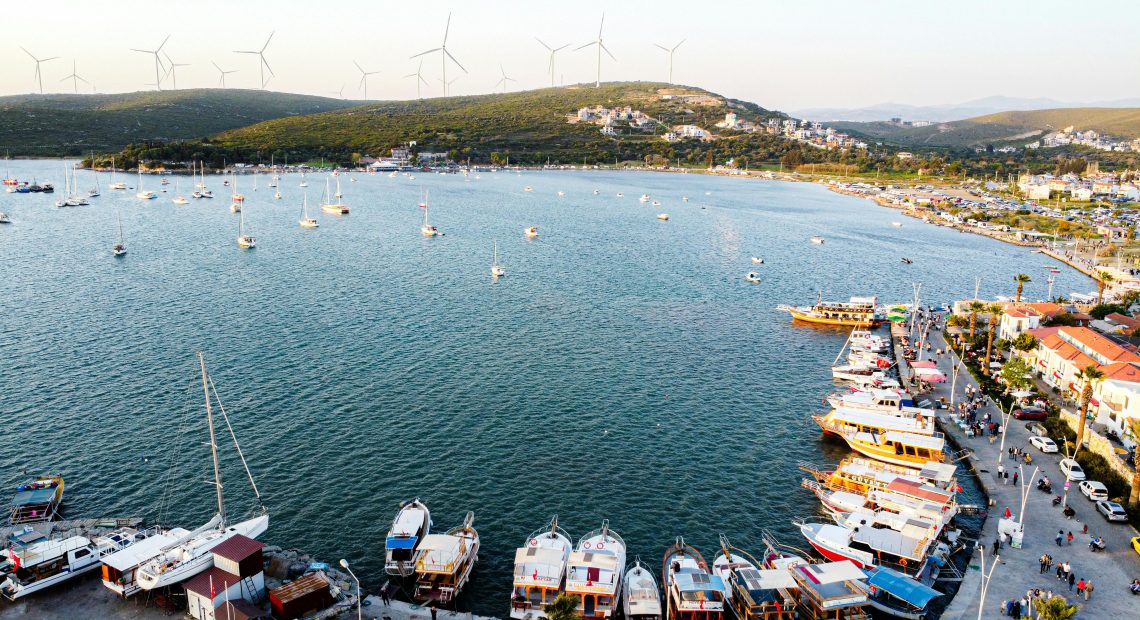
Every day, our oceans produce over 2.5 quintillion bytes of data. This comes from automated sensors, satellites, and underwater systems. It’s a huge amount of information about our planet’s oceans.
The world of maritime science is at a turning point. Digital transformation is changing how we protect our oceans and manage resources. New technologies give us constant updates on water temperature, where species move, and how healthy the ecosystems are.
This data revolution brings both great chances and big hurdles. We have more ocean data than ever before. But, the marine science world is just starting to use this data fully. By combining different fields of study, we could learn a lot more about our oceans.

Data-driven approaches are key for solving ocean problems. Now, ocean conservation uses smart algorithms and live monitoring. This helps make better choices to protect marine life.
Key Takeaways
- Oceans generate 2.5 quintillion bytes of data daily through automated monitoring systems
- Digital transformation offers unprecedented opportunities for Marine Conservation efforts
- Complex interdisciplinary analyses can revolutionise ocean studies and resource management
- The marine science community faces unique challenges in maximising big data value
- Real-time monitoring enables more informed decision-making for marine habitat protection
- Technological advancement is creating novel approaches for ecosystem preservation
Understanding Marine Conservation and Its Importance
Protecting marine environments is now more urgent than ever. Oceans face big challenges like climate change, pollution, and overfishing. To save life under the sea, we need new strategies that mix science and technology.
We’re at a turning point where old ways of saving the ocean won’t work anymore. Ocean systems are too complex for simple solutions. Now, we’re using data to make our conservation efforts more effective.
What is Marine Conservation?
Marine conservation is about studying and managing ocean ecosystems. It aims to protect marine habitats, species, and the services they give us. This field uses biology, ecology, and tech to find sustainable solutions.
It takes teamwork from scientists, policymakers, and communities to protect the ocean. Modern conservation efforts use advanced data to make a difference.
Conservation experts tackle both urgent threats and long-term goals. They work on issues like habitat loss and species extinction. Their goal is to keep the ocean healthy for the future.
Key Objectives of Marine Conservation
Marine conservation has several key goals to protect the ocean. These goals show how complex and threatened marine ecosystems are.
- Habitat preservation – Protecting places like coral reefs and deep-sea areas
- Species protection – Saving endangered marine animals and keeping populations stable
- Sustainable resource management – Making sure fishing and other activities are safe for the ocean
- Pollution reduction – Reducing harmful substances in the ocean
These goals need ongoing monitoring and flexible management. Success depends on knowing how conservation actions affect nature. Collecting data is key to measuring progress.
The Role of Marine Biodiversity
Marine biodiversity is the heart of healthy oceans. It includes everything from tiny plankton to huge whales. This variety keeps ecosystems stable and strong.
Biodiversity is vital for services like climate control, carbon capture, and food. Oceans with more biodiversity are better at handling changes.
When one species goes, it can upset the whole food web. Marine biodiversity conservation focuses on protecting entire ecosystems. This approach highlights the complex links that keep the ocean alive.
As human activities grow, understanding these links is more critical than ever. We see that saving the ocean means keeping all its life forms. This drives the need for detailed, data-based conservation plans.
The Intersection of Technology and Conservation
Technology and marine conservation are coming together in a big way. This change is transforming how we protect our oceans. New digital tools are helping us understand marine life better than ever before.
Modern marine science uses advanced systems and smart sensors. These tools give us a constant flow of data. This data helps us see things we couldn’t before. It’s changing how we protect our oceans.

How Technology is Reshaping Marine Studies
Smart sensors are changing how we collect ocean data. They work all the time, giving us info on water and marine life. This is way more than old methods could do.
Satellites now watch over the ocean in real-time. This lets scientists see changes as they happen. We can track everything from tiny plants to big ocean currents.
Automated systems are making field research better. They cut down on mistakes and make data more consistent. They also let us explore places that were too hard or dangerous before.
Marine science is now more connected than ever. We can mix different types of data together. This gives us a full picture of the ocean’s health.
The Future of Marine Research with AI
Artificial intelligence is going to change marine conservation a lot. AI can look through huge amounts of data fast. It finds patterns and trends we might miss.
AI will help us act before problems happen. It can predict threats to the ocean. This is great for keeping fishing sustainable and protecting marine life.
AI is already helping with sustainable fishing practices. It tracks fish populations in real-time. This helps fishing boats avoid harming vulnerable species.
AI will soon be able to identify species and count populations. It will look at underwater videos to understand marine life. This will give us new insights into the ocean.
AI will make conservation smarter. It will adjust protection based on what’s happening in the ocean. This will help protect the ocean while also helping the fishing industry.
Big Data Explained: What’s at Stake?
Big data is changing how we protect our oceans. It gives us new insights but also big challenges. We must act fast to save our oceans from harm.
This new technology helps us understand our oceans better. But, it also brings new problems. Having lots of data doesn’t always mean we have the right answers.

Defining Big Data in the Context of Marine Conservation
Big data in marine conservation means lots of information from our oceans. It comes from satellites, underwater sensors, research ships, and people helping out. This data is more than we could have imagined before.
This data is key for keeping our oceans clean and tracking life in the sea. Satellites watch for oil spills, sensors check water quality, and research ships do detailed studies. People from all over help with local data too.
The three main things about marine big data are:
- Volume: Terabytes of data every day from all over
- Velocity: Data comes in fast, needing quick processing
- Variety: It’s all sorts of data, from samples to sounds
Challenges Associated with Big Data
Big data is full of challenges for saving our oceans. Getting good data is hard because of different ways to collect it. Many places struggle with data that doesn’t match up.
Storing and using this data needs powerful computers. But, many groups can’t afford them. This limits what they can do with the data.
Some big problems are:
- Data sharing barriers: Rules that make it hard to work together
- Analytics expertise: Not enough people who know how to use the data
- Training networks: Few places teach the new skills needed
- Computing infrastructure: Not enough power to handle the data
These issues make it hard to keep our oceans clean. Working together is key to solving these problems. We need to fix these gaps to save our oceans.
Data Collection Methods for Marine Conservation
Effective marine conservation starts with detailed data collection. Modern tech has changed how we track ocean changes. It gives scientists a deep look into vast ocean areas. This tech helps us make informed conservation choices.
We use many data collection tools today. Each tool has its own role but works together well. This teamwork helps us protect our oceans better.
Remote Sensing and Satellite Imagery
Satellites are key for watching over the oceans. They offer continuous surveillance over huge areas. Scientists can see changes in sea temperature and track algae blooms.
For coral reef conservation, satellites are very useful. They spot coral bleaching early. This helps us protect reefs and find those that are strong.
Today’s satellites can see more than ever before. They capture high-resolution images. This helps us plan conservation better and find key habitats to protect.
Underwater Drones and Their Applications
Autonomous underwater vehicles (AUVs) are a big step forward. They can dive deep and work alone for a long time. They collect images, water samples, and more without humans.
Underwater drones are great for marine wildlife conservation. They follow animals, study their homes, and check on their health. They work well in tough places.
AUVs can be set up for specific tasks. Scientists can program them to study certain things. This makes their work more focused and less harmful to the environment.
Using both satellites and underwater drones gives us a full view of the ocean. Together, they offer a wide view and close-up details. This helps us protect the ocean better and understand its complex systems.
The Role of Citizen Science in Data Collection
Citizen science is changing how we protect our oceans. It lets ordinary people help in big ways. Together, they collect lots of data for marine conservation.
Before, research had limits. Citizen science programmes now help by getting data from many volunteers. This helps us understand our oceans better and builds community ties.
Engaging the Public in Marine Monitoring
Today, technology makes it easy for people to help. Apps let beachgoers report pollution. Underwater photos help us see marine life.
Beach surveys are a big hit in marine monitoring. Volunteers collect data on pollution and wildlife. This helps scientists over many years.
Training helps volunteers collect good data. They learn through online tutorials and workshops. This makes them better at helping our oceans.
Success Stories of Citizen Science Initiatives
Coral reef monitoring shows the power of citizen science. Divers check on reefs, helping us understand them better. This work covers many reefs worldwide.
The Great Barrier Reef Eye on the Reef programme is a great example. It uses data from divers and locals. This helps scientists and managers make better decisions.
Citizen science can change how we see marine ecosystems. It gives us data we can’t get from traditional research.
Fish surveys by anglers are also important. Apps help them log their catches. This data helps scientists track fish populations.
Tracking pollution is another key area. Volunteers report on debris and water quality. This helps shape policies and clean-up efforts.
Data Analysis Techniques Transforming Conservation Efforts
Advanced analytical techniques are changing marine conservation. They turn complex data into useful insights. These methods help researchers understand ocean information quickly and accurately.
Artificial intelligence and computational analysis are opening new doors for marine biodiversity and marine ecosystem protection.
Old methods can’t handle today’s data volume. Now, tools can look at millions of data points at once. This is a big change in how we tackle conservation issues.
Machine Learning in Marine Ecosystems
Machine learning is great for understanding marine biodiversity. It can spot species in underwater photos and track changes. It’s very good at finding details humans might miss.
Deep learning is key for identifying species and mapping habitats. It can go through thousands of photos, classifying marine life and checking health. It gets better with each new dataset.
Computer vision systems watch underwater videos, counting fish and studying their behaviour. This saves time and gives consistent data. It’s a big help for marine ecosystem protection.
Predictive Analytics for Better Decision-Making
Predictive analytics is a big step forward in conservation planning. It uses past data to forecast future changes. This lets conservationists act before problems start.
These models predict coral bleaching, fish migrations, and climate impacts. They help plan marine ecosystem protection efforts. Early action is more effective than reacting late.
Algorithms look at many factors to assess risks. They consider water temperature, pollution, and fishing. This helps focus conservation efforts where they’ll have the most impact.
Combining real-time data with predictive models creates strong decision tools. These guide policy makers and managers in making informed decisions. They protect marine biodiversity while considering economic and social needs.
Case Studies: Successful Marine Conservation Efforts
Across the globe, conservation victories show how data is changing marine protection. These successes use big data with old methods. They protect coral reefs and track marine mammals, showing data use leads to real results.
Here are some key wins in marine ecosystem preservation. Each story shows how new data tools help protect our oceans.
Protecting Coral Reefs with Data-Driven Strategies
The Great Barrier Reef Marine Park Authority leads in coral reef conservation. They use satellite images, underwater sensors, and models to protect the reef.
They track water temperature, light, and chemicals. This info helps predict coral bleaching. So, they can act fast to save the reef.
They collect data in many ways. Satellites check the reef’s health over large areas. Underwater sensors give live data from key spots.
Thanks to this, coral death rates have dropped by 35%. They can now predict stress and take action, like limiting fishing and tourism.
Whale Migration Patterns and Conservation
Acoustic monitoring is changing how we protect whales. It uses hydrophones, satellites, and AI to track whales over long distances.
Devices on whales give deep insights into their journeys. GPS and depth sensors show where they go and what they do. This helps find important places to protect.
This new tech has changed how we see whales. It lets us follow whales for months, seeing how they interact with ships and climate changes.
More marine protected areas have been created, up 40% in five years. This is because of data on whale migration. It makes sure protected areas match where whales live.
Working with the shipping industry has also helped. Whale data helps plan safer routes for ships. This has cut ship strikes by 60% in some areas. It shows how marine wildlife conservation can work with industry.
Preventing Illegal Fishing through Data
Modern surveillance systems, powered by big data, are changing how we track and stop illegal fishing worldwide. These new technologies are a big step in protecting our oceans from harmful fishing. They help keep marine life safe and support sustainable fishing practices.
By combining satellite tech with data analysis, we can now watch over the seas better than ever. Fishing boats can’t hide in the vast ocean anymore. Advanced tracking systems keep an eye on all ships, everywhere.
Tracking Fishing Grounds with Satellite Data
Satellite systems use many data sources to track fishing. The Automatic Identification System (AIS) is key, making boats send out their location and details all the time.
Other tech, like radar and optical satellites, help find boats trying to hide. Together, they make sure fishing in protected areas is watched closely. This helps prevent ocean pollution.
Some important things satellite monitoring can do include:
- Tracking boats in real-time all over the world
- Finding out when fishing gear is used or removed
- Spotting boats without the right permits
- Watching if boats follow fishing rules
- Keeping an eye on where boats are allowed to fish
These systems help spot odd fishing patterns fast. If a boat changes direction suddenly or turns off its tracker, it gets flagged for a closer look.
Government and NGO Collaborations
Groups like governments, NGOs, and tech companies are working together. They share data to track down illegal fishing. This makes it hard for bad fishing to hide by crossing borders.
Global Fishing Watch is a great example of this teamwork. It uses satellite data to show where fishing is happening. This helps researchers, journalists, and groups working to protect the sea.
It’s important to be open about fishing to keep our oceans healthy. This helps real fishing communities that follow the rules.
Programmes that use data are really working:
- They’ve cut illegal fishing by up to 70% in watched areas
- Boats are following fishing rules better
- More marine animals are safe
- Support for good fishing practices is growing
These partnerships are getting bigger and better. New groups are joining to tackle new challenges in keeping our seas safe and clean.
The Future of Marine Conservation with Big Data
Technology and science are coming together to change marine conservation. We’re seeing a new era where advanced tech meets monitoring systems. This mix is transforming how we protect our oceans.
Quantum computing and artificial intelligence are leading this change. They let us handle huge amounts of data quickly. This reveals secrets of marine life that were hidden before.
Emerging Trends in Marine Conservation Technology
Quantum computing is at the heart of this change. It gives us the power to model complex marine ecosystems. Marine conservation efforts will greatly benefit from this.
IoT sensors are getting smarter, creating networks of devices in the ocean. These sensors track water quality, temperature, and marine life. Edge computing makes this data useable in real-time.
Cloud-based analytics platforms are growing to handle big data from many sources. They combine satellite images, sensor data, and biological surveys. Artificial intelligence algorithms are getting better at spotting changes in the ocean.
Using old knowledge with new data is also exciting. Indigenous communities have ocean insights for centuries. When we mix these with modern data, we get powerful conservation strategies.
The Role of Policy in Protecting Oceans
Good policies are key to using new tech for marine conservation. Governments need to support innovation and use data wisely. International cooperation is vital as oceans don’t follow borders.
Data sharing is the foundation of ocean conservation initiatives. It lets researchers and conservationists work together. Standardised monitoring ensures data can be shared and used everywhere.
Having policies that work together across countries is important. It helps us respond quickly to threats and share resources. Laws need to keep up with new tech.
Strong data governance is essential. It keeps marine data safe but also available for conservation. This balance helps research while protecting the environment.
Community Engagement and Awareness
Data-driven storytelling is changing how we talk about ocean preservation worldwide. It turns complex marine research into stories we can all understand. Interactive data platforms and compelling visualisations are bridging the gap between scientific discovery and community action, making marine conservation more tangible and urgent for everyday citizens.
Modern conservation efforts know that public support is key to success. When communities get the marine data, they become strong voices for change.
How Data is Raising Awareness About Marine Issues
Visual data storytelling is a powerful tool for marine conservation challenges. Interactive maps show ocean temperature changes, plastic pollution, and species migration. They turn abstract statistics into stories we can see.
Virtual reality experiences now transport viewers to coral reefs and deep-sea environments, creating emotional connections with marine ecosystems they may never visit in person. These immersive technologies allow people to witness the immediate impacts of climate change and pollution on underwater habitats.
“When people can see the data visualised in real-time, showing how their local coastline connects to global ocean systems, they understand their role in marine conservation immediately.”
Social media campaigns using compelling marine data visualisations have reached many people. Shareable infographics and animated data stories make complex science easy to understand. They motivate people to take action for conservation across different demographics.
The success of these initiatives shows how ocean preservation efforts benefit from public engagement and understanding.
Educational Programmes: Bridging the Gap
Educational institutions are now using real-time marine data in their classes. These programmes connect classroom learning with actual scientific monitoring, helping students see the importance of marine protection.
Community-based monitoring programmes combine education with data collection. Participants learn to identify species, measure water quality, and document environmental changes. They also contribute valuable information to marine conservation databases.
The following approaches have proven most effective in educational engagement:
- Hands-on data collection workshops for local communities
- School partnerships with marine research institutions
- Citizen science projects that combine learning with research contribution
- Online platforms providing access to real-time marine monitoring data
These educational initiatives create lasting connections between scientific research and public understanding. Participants develop a deeper appreciation for marine conservation challenges. They become long-term advocates for ocean preservation in their communities.
The integration of technology and education continues to expand possibilities for public engagement. It ensures that marine conservation becomes a shared responsibility across all sectors of society.
Conclusion: A Path Forward for Marine Conservation
The ocean data revolution is our best chance to protect marine life. Big data has changed how we tackle marine issues. It opens up new ways to succeed in conservation.
The Importance of International Collaboration
Protecting the ocean needs global teamwork. Ocean creatures move far, so we must work together. By sharing data and following the same rules, we can all help.
Partnerships, like the one between the European Space Agency and marine research, show how we can make a bigger difference. These teams share data and work together to protect the ocean.
Future Prospects for Ocean Conservation
New technologies are key to keeping our oceans clean and healthy. AI, machine learning, and sensors help us watch over the sea better.
We have the tools to save our oceans today. But we need to keep investing in tech and working together. Let’s use data to create plans that will protect our oceans for the future.
FAQ
What is big data in marine conservation and why is it important?
Big data in marine conservation is about huge amounts of information from many sources. This includes satellite images, sensor networks, and research vessels. It’s key because it gives us deep insights into ocean life.
This information helps scientists understand complex marine processes. It also helps in making effective conservation plans. Protecting marine life and managing ocean resources for the future depends on it.
How is artificial intelligence transforming marine research?
Artificial intelligence is changing marine research by making it faster and more efficient. Machine learning algorithms can spot complex patterns in data that humans can’t. AI systems can look at data from many sources at once.
They notice small changes in marine life patterns. They also create detailed models to predict changes in ecosystems. This helps in planning conservation efforts.
What are the main challenges in managing marine conservation data?
Managing marine conservation data is hard due to several reasons. Getting quality data from different sources is a big challenge. Also, storing and processing this data need advanced computing systems.
Handling large amounts of data from various sources is a big task. It affects marine conservation efforts and efforts to prevent ocean pollution.
How do satellites contribute to marine ecosystem protection?
Satellites watch over the oceans from space. They help track changes in sea temperature and monitor algae blooms. This is vital for understanding marine ecosystem health.
Satellite data is also key for coral reef conservation. It helps scientists monitor reef health and track bleaching events. It supports sustainable fishing by monitoring fishing activities.
What role does citizen science play in marine conservation data collection?
Citizen science plays a big role in collecting marine data. It involves ordinary people contributing data through apps and surveys. This helps gather data that researchers alone can’t collect.
Success stories include coral reef monitoring and fish surveys by divers. Coastal pollution tracking also benefits from public involvement. It raises awareness and provides valuable data.
How are underwater drones advancing marine wildlife conservation?
Underwater drones, or AUVs, dive deep to collect detailed marine data. They work independently for long periods, gathering images and water quality data. They help create detailed datasets for conservation decisions.
These drones work with other technologies to understand marine ecosystems better. They support evidence-based conservation efforts.
What are predictive analytics and how do they benefit marine conservation?
Predictive analytics help scientists forecast changes in marine ecosystems. They model the effects of conservation actions. This includes predicting fish migrations and coral bleaching.
By combining past data with current observations, predictive models guide conservation efforts. They help plan proactive measures for marine protection.
How is technology helping to combat illegal fishing?
Technology, like advanced data analytics and satellite imaging, monitors fishing activities. It helps detect illegal fishing in protected areas. This includes using AIS data and radar images.
International efforts share data to track fishing activities. Organisations like Global Fishing Watch use satellite data to increase transparency. This supports sustainable fishing practices.
What emerging technologies will shape the future of marine conservation?
Future marine conservation will be shaped by new technologies. Quantum computing, edge computing, and cloud analytics will improve data processing. IoT sensors and autonomous systems will monitor oceans continuously.
Next-generation AI will integrate data for holistic assessments. Virtual and augmented reality will engage people in marine conservation.
Why is international collaboration essential for marine conservation?
Ocean conservation needs international cooperation. Marine species move across borders, making global efforts necessary. Collaboration ensures data sharing and standardised monitoring.
It’s vital for effective conservation strategies. Our oceans’ future depends on working together to use big data effectively.
How can data visualisation improve public engagement with marine conservation?
Data visualisation makes marine data engaging and accessible. It turns complex data into compelling stories. This inspires action and raises awareness.
Online platforms, virtual reality, and augmented reality bring ocean conservation to people. Social media campaigns use visual data to motivate conservation efforts.
What is the significance of marine biodiversity in ocean health?
Marine biodiversity is essential for healthy oceans. It supports all marine life, from plankton to whales. Diverse species maintain ecosystem stability and help regulate the climate.
This biodiversity is vital for sustainable ocean use. Data-driven conservation is key to protecting marine ecosystems for the future.
Resources
Global Ocean Data Platforms
-
Ocean Biodiversity Information System (OBIS)
A global open-access data platform that aggregates marine species data from around the world to support biodiversity science and policy. -
Copernicus Marine Service
Provides free, high-quality ocean observation and forecast data, supporting marine safety, coastal management, and environmental monitoring. -
EMODnet (European Marine Observation and Data Network)
A comprehensive EU initiative for assembling marine data across disciplines – from sea bed mapping to water quality and human activities.
Technology & Innovation in Marine Monitoring
-
MBON (Marine Biodiversity Observation Network)
A global network enhancing biodiversity monitoring through data standardization, remote sensing, and citizen science. -
Argo
A worldwide network of robotic floats collecting real-time temperature, salinity, and current data from the upper ocean. -
Google Ocean
Explore the ocean with Google Earth’s interactive features, and access visualised scientific data through storytelling.
Scientific & Conservation Organisations
-
NOAA Ocean Exploration
US-based ocean exploration programme offering vast data resources, expedition logs, and educational tools. -
The Ocean Cleanup – Data Dashboard
Tracks plastic collection and models marine debris movement using real-time analytics and ocean current data. -
UN Decade of Ocean Science
Coordinated by UNESCO, this global initiative promotes innovation and collaboration in marine science for sustainable development.

